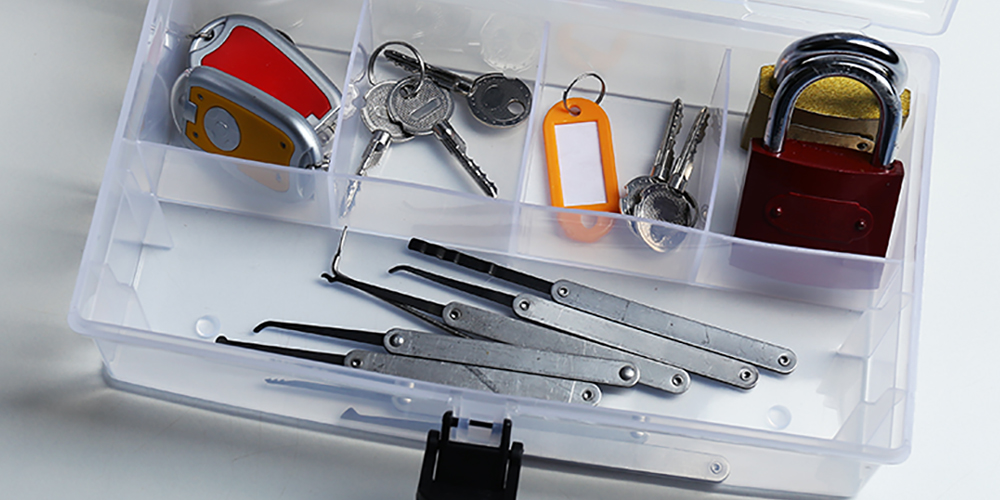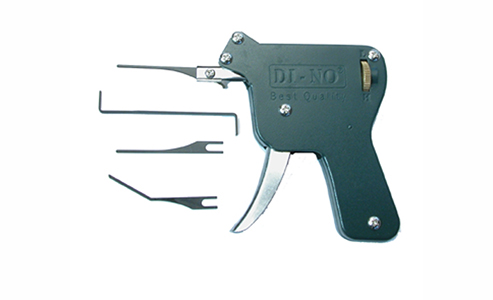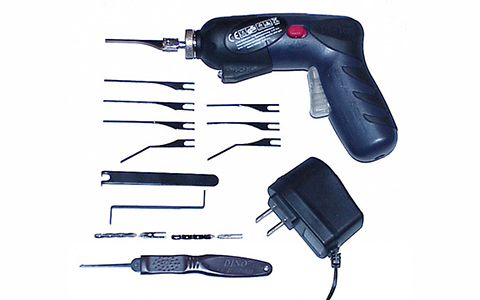Lock Blog
A resource for consumers, locksmiths, and security professionals
A resource for consumers, locksmiths, and security professionals

Electricity is at the heart of humanity’s victories over adversity. Electricity gives us light in the dark. It affords us many luxuries. We can use electricity to wash our clothes, watch television and even operate the locks in our homes and offices. And at any time we can tweet all about our day on handheld electronic devices. Thanks to electricity, tasks become easier and the world seems more connected. But to some, the lack of adversity is seen as a contributing factor to a lack of character. In the lock picking world, electricity has staked its claim for the ease that it offers pickers. Now that ease is being examined. How quickly does an electric pick work? Is one better than the other? Why? How simple does it make picking? For now let us define our terms so we know a little more about the topic at hand.

Manual picking is simply the use of your own hands and faculties to pick a lock. This type of picking can include single pin picking (SPP) and raking, bitch picking, or any other form of picking that uses non-electric tools. Manual picking affords the picker many options, as there are many ways to go about picking a lock. Every different approach and style of this type of picking will perform differently in different situations. SPP gives the user the most range, with the ability to receive feedback as to how the lock is internally structured. SPP does take the most skill, time, and practice, but it can also be the quickest way for a master to open a lock. For the beginner or the professional with a lack of patience and/or time, there is everything else. Raking will work very well on most low-security locks, but it will not give you a clear insight into the mechanics of the device. The most raking will likely do is inform you that there are no security pins (it will open) or that it does have security pins (it does not open). This is also the case for bitch picking, but it is possible to get lucky and open a high-security lock with either of these methods, it is just unlikely.
Picking without the use of electronic assistance has versatility. There are crutches within the rather large umbrella of manual picking, but even those methods do require a level of knowledge and skill, which can be achieved with practice. There are no easy ways out with these methods, just easier methods. Still even with a manual pick gun, the picker will also need to be adept at tensioning the lock. Tension is an art that most forget or overlook, but even with the simplicity of sticking a tool into the keyway and randomly scraping and stabbing, the pins will not set if the tension is too light or too severe. The only form of manual picking that does not require tensioning is the use of a bump key. Bump keys are perhaps the simplest tools for picking, but they ultimately require knowledge as well. Certain locks require a particular bump key because the groove depths need to be set to the deepest cut for that lock brand. So with lock bumping you do need to understand the lock you are working with, it is based on knowledge and requires little skill or practice.
Hooks– These picks are most commonly used for SPP. But they can also be used bitch pick or be flipped upside down to be rocked in the keyway.
Rakes– These picks attempt to move all of the pins at once. The shape of the tip is meant to simulate the bitting on a key and come in a variety of patterns.
Diamonds– These picks are very adaptable. Most commonly referred to as a half diamond, the shape of this pick’s tip is a triangle. They come in a variety of sizes, have different angles on the slopes of the triangle. Depending on the size you can rake, zip, or SPP with a diamond.
Bump keys– A key that is cut to the lowest groove depth for every pin, and struck as it is turned in the keyway. This method does not require a tension wrench.
Tension wrenches– In almost every situation, you will need to apply tension to the lock you are trying to pick. Tension keeps the pins from falling back down into the keyway, so you do not have to set all the pins in one try like you do with a bump key.
Manual pick gun– This tool snaps a long slim piece of metal upward when it is triggered. Most often the severity of the upward spring can be lessened or increased. Although this functions similar to a bump key, the lock will need to be tensioned for the process to be effective.
Pros
Cons

The electric pick was created to be an easier to use version of the manual pick gun. The addition of electricity replaced the physical trigger with a switch that would engage the vibration of the pick attached to the end of the device. A tension wrench is still needed when the electric pick is in use. Many people do make these types of devices themselves with electric razors, electric toothbrushes, and other vibrating items that can be found around the house. The main components are a pick of some kind, often a slim piece of straight metal (but in other cases a rake is used), and a battery-operated vibrating tool. Battery operation is a must, as in an emergency or on a locksmith call, finding an outlet or any electricity might be impossible.
These types of tools are not difficult to use, per se, but they do require a bit of practice. It is not as simple as sticking the vibrating end of the electric pick into the keyhole, and waiting for it to open. If that is your approach, you may be waiting there for quite a while. If the pick is not properly calibrated to the needs of the lock, you could over set pins, or simply not move them high enough. Electric picks are not this amazing cure for a lack of picking ability, you still need to be proficient with the use of your tension tools. You also must deal with using the tension wrench and the sometimes unwieldy pick at the same time. The troublesome shape of some of these tools can take some getting used to, but it is a skill like anything else. The more you use your tools the better you will get at adjusting and compensating for the challenges you will face.
Electric pick gun– A pick that is moved (most often vibrated), by the use of electricity. Most often the device is triggered and that is where the term pick gun, comes from.
Tension wrench– In this case, the tension wrench is one of the most important parts of using an electric pick. If the pick is not working no matter what you do, then it is most likely a result of your tensioning being too major or minor.
Pros
Cons
There is no clear winner that sticks out in this battle. These are all methods of doing the same thing, but some are easier to learn. Using a pick gun is not much easier than learning to rake a lock, but the speed the electric pick can achieve makes it more effective on high-security locks. Essentially an electric pick gun can rake a lock more times and longer than you would want to by hand. It still relies on luck, but at a point can be used to almost feel around in the lock and SPP.
The only downside to using the electric pick is that picking is a perishable skill. It is not like riding a bike. Your picking ability gives you what you put into it, and dissipates as you neglect it. The use of an electric pick to the exclusion of using manual tools will atrophy you abilities. As always, do what works for you, but when the batteries die, be prepared to do it differently. The use of these tools is prohibited to professionals in some areas of the world and parts of the USA, so remember to check your local laws before investing in equipment that might not be legal to own. Manual or electric, learn the skills and hone the craft.
Category: Lock Picking, Tools of the Trade